I spent 5 days in Granada, Andalucía, Spain. I have to say that I found the city to be beautiful, fun, unique, and full of history. Tourist flock to Granada in the Spring and Fall to visit the Alhambra. Not so much in the Summer. It’s very Goldilocks: not too big or too small; not too touristic or too local; just right.
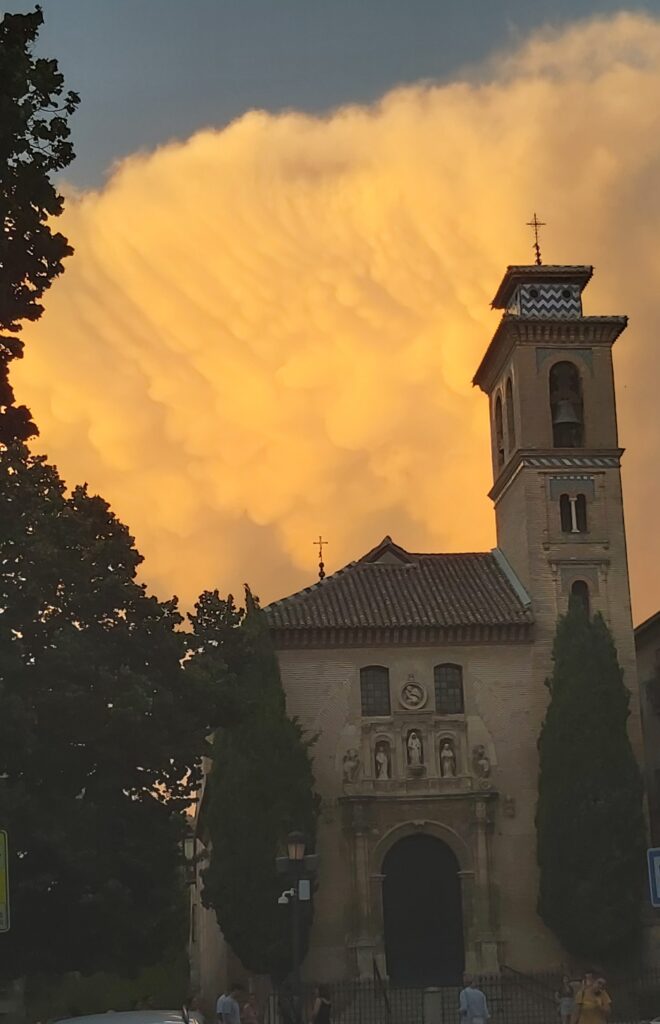
Leaving the metropolis of Madrid, I rode the rails south to the Granada, the home of the famous Alhambra. Granada, along with Córdoba and notably Seville, is one of the major cities in Andalucía, the southern most regions of the Kingdom of Spain.
It was an easy journey with no train changes. Just sit back and watch the same view for hours. Central Spain alternately reminds me of eastern Oregon and Northern California. It has rolling plains which are sometimes grain fields, sometimes orchards, and sometimes trees. Although, it might be that the trees were just orchards and I hadn’t recognized the type of trees. Very occasionally, there were areas of actual forest. Rest assured that every bit of land was put to some use.
Granada was founded by the Turdulos, one of the first inhabitants of the Iberian Peninsula Iberian. The Romans later “snagged up” the town, although more often “conquered” is used, and by the 1st or 2nd century BCE Granada was a “municipality.” In 711 CE, North African Muslims led by Tariq ibn-Ziyad conquered the Iberian Peninsula (now Spain and Portugal). The Muslim Nasrid dynasty, later called Moors (literally, anyone with dark skin), ruled until 1492 CE, the Catholics conquered the Nasrids (that word again, but this time the Nasrid king surrendered) and controlled the Iberian Peninsula.

It wasn’t until I was south of Córdoba that the landscape changed. The rolling plains began to roll more vigorously, until they became hills and valleys. The fields, orchards and whatnot, became endless fields of olive trees. Nothing but olive trees: no other vegetation, just bare ground and olive trees. Very occasionally, there were fields of corn and other crops. It seems there was just enough corn to supply the farmer. Continuing on, the hills became steeper and the valleys narrower. And then I was in Granada. Hang on, let me take a detour…
Did something else happened in 1492 CE? Maybe, but stayed tuned for the Seville blog.
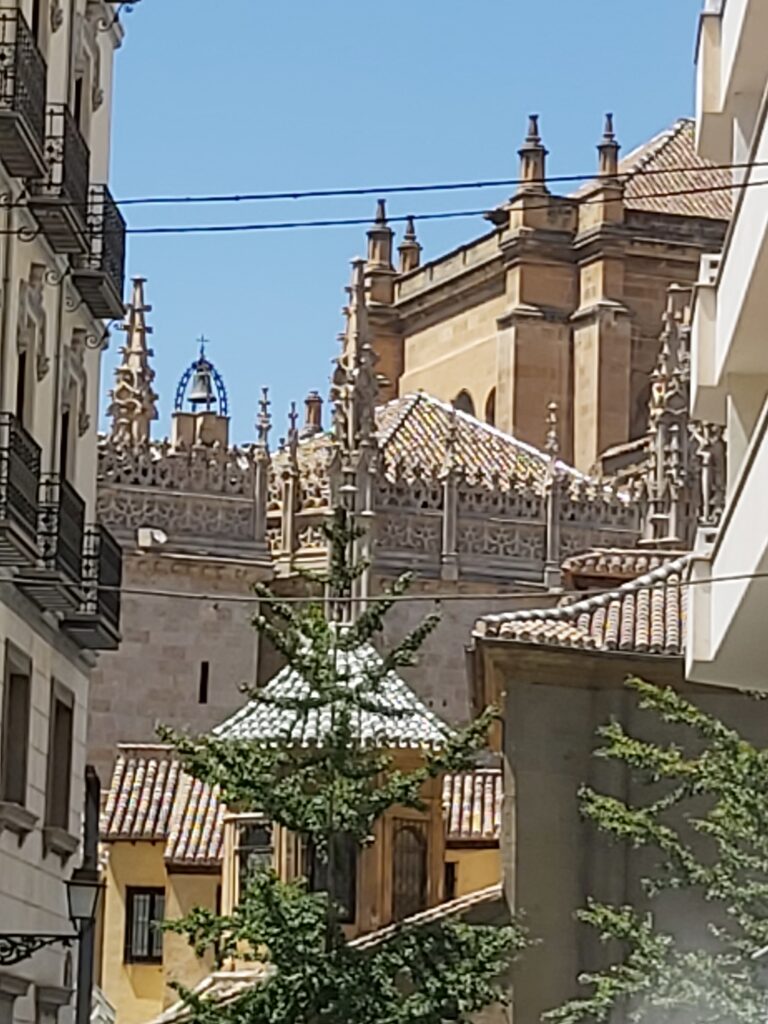
Anyway, why the history lesson? Because it’s critical to understanding the culture and architecture of the region. Even after the conquest of the Catholic monarchs, the culture and architecture continued to embrace Nasrid designs, with its organic shapes and geometry patterns. Catholic kings would even include Islamic sayings into the palaces and cathedrals. Nasrid design continues to play a central role in Andalucía, even today. We ignorant souls are tempted to think of Catholic (i.e., Christian) conquest of the Nasrid (i.e., Moors) as bloody and unforgiving, but the truth is very obviously different.
Detour over. Back to Granada. I arrived at the modern train station, and caught a bus to the city center. According to the map on my phone, the station is a long way from the city center. In reality, it about a mile. Every time I look at a map of old cities, with their narrow, meandering streets, I am deceived. What looks like miles, is in reality a 10-minute walk. It’s a bit like Las Vegas: There you are tempted to walk to the next set of traffic lights, they are right there. You’ll regret it. Major roads are 1 mile apart.
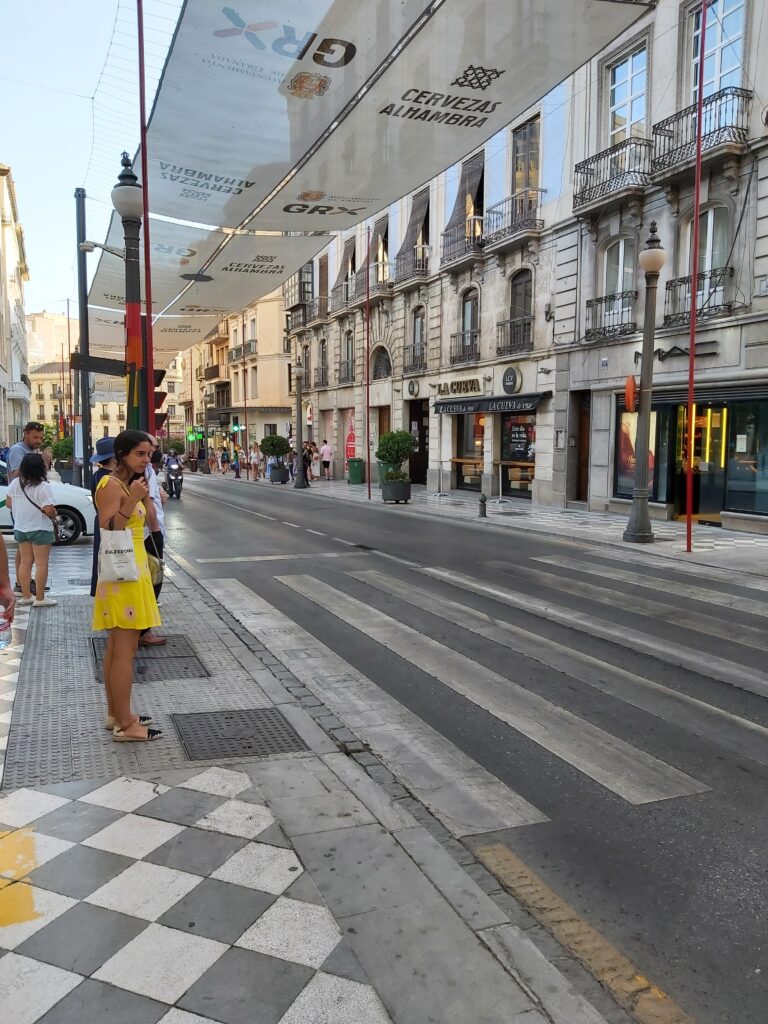
Once I got off the bus, I was still a day’s walk away from the hotel. A day, or maybe 5-minutes. It’s hard to tell on a map. I headed off. There were amazing buildings, beautiful fountains, sun shades stretched over the streets, and sidewalks. Yes, sidewalks! Stone walks paved in intricate patterns. Checker boards and plant motifs, labor-intensive, whimsical and totally extravagant, but necessary to the “granadinos” (yep, that’s what they are called). The streets are only slightly less ornate.
Speaking of streets, don’t believe Google! Google maps can’t handle directions in the historic city centers. Walk 500 meters around the plaza, instead of 50 meters across it. Take five minor roads and two alley ways, instead of the directly along the main road because that involve a plaza. I have no choice but to follow its directions; I’m still confused by maps.
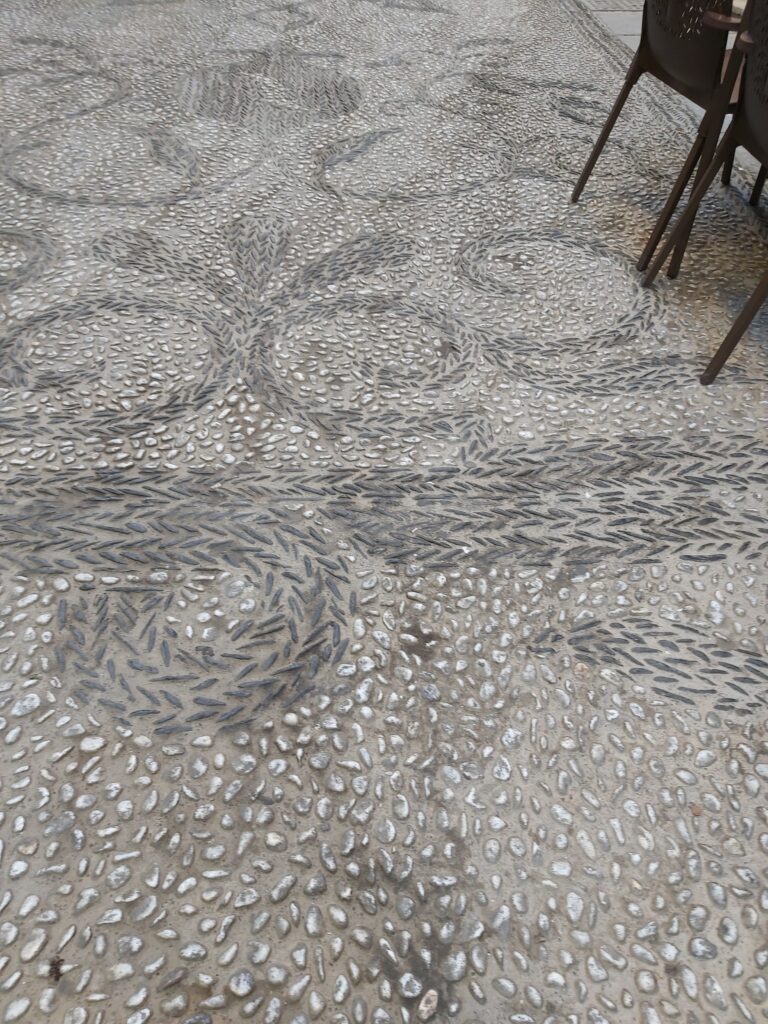
One of the main reasons to visit Granada is to see the Alhambra. If you have study art, or history, or architecture, then you know the Alhambra. A World Heritage site. Amazing. Gorgeous. Inspiring.
Or so I am told. Remember my rant about planning? Well, everyone told me I could get a ticket if I showed up first thing in the morning. Shame on me, I believed them. I got to the Alhambra at 8:00, it opens at 8:30. I was 5th in line for tickets. Those with online tickets were in a different line. I stood in line for 20 minutes, and was told they had an IT problem which could take an hour to straighten out. An hour later, I was told that maybe I could buy a ticket online. I walked back to the hotel. Got online, only to find out that the tickets were sold out until the next week. Prior Preparation Prevents Piss Poor Performance!
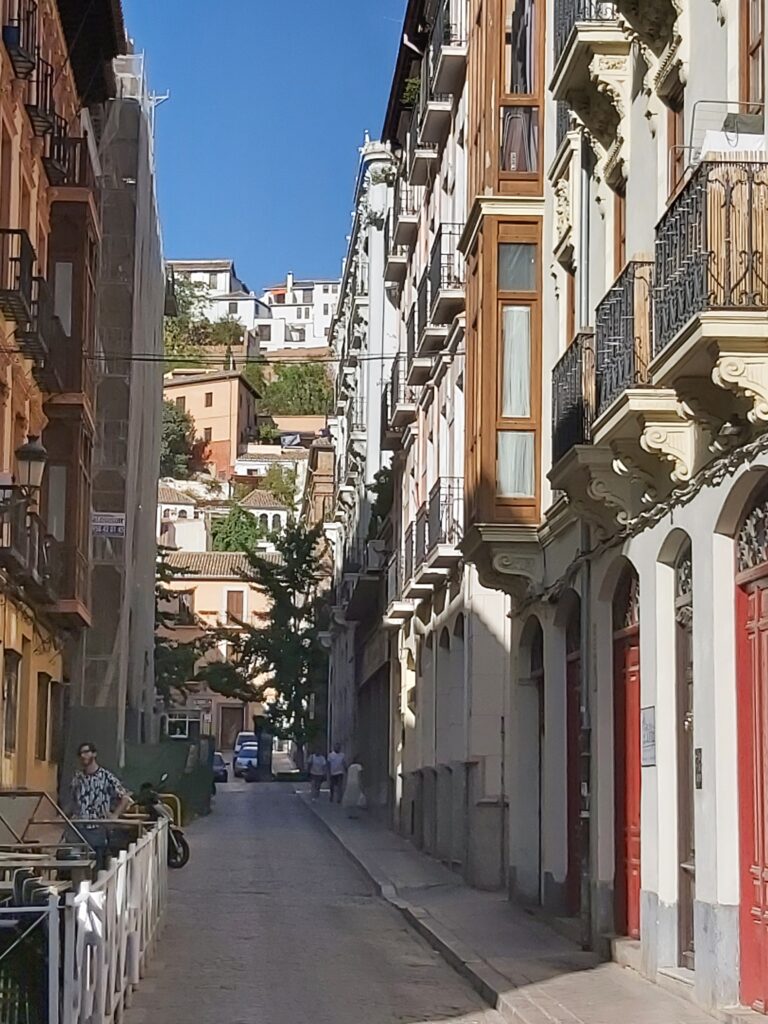
The silver lining? Granada has great restaurants, tapas bars, cathedrals, and architecture. And… and I have an excuse to go back to Granada. The Alhambra. I think I’ll go in the spring or fall, when everyone else does (you know, because it’s not unbearably hot). Or maybe in the winter? Did you know that the Sierra Nevada mountains just outside of Granada rise to 11,400 feet and have some of the best skiing in Europe? Well, the tourist office says it’s all true!
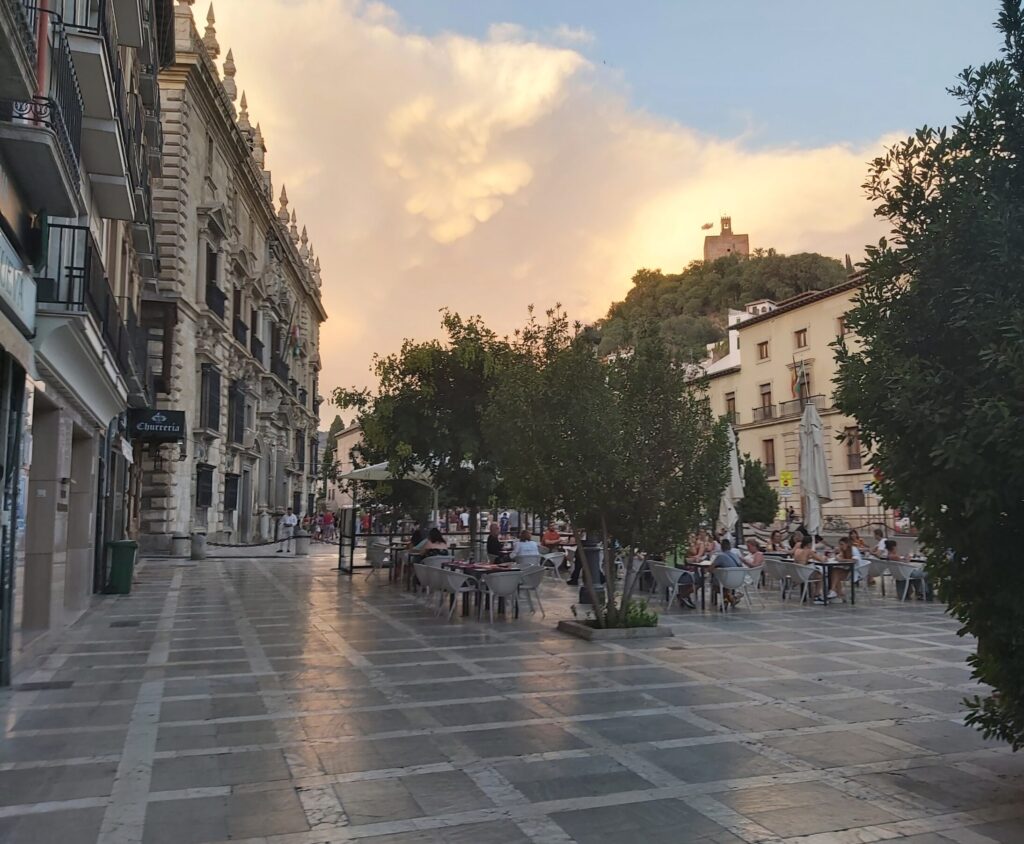
Love all the history lessons. And BEAUTIFUL pictures! BTW, in the last pic down the charming street with stunning architecture, is that Eric standing on the left, next to the outdoor railing? He said he was at work!?
What your children choose to tell you is their business.